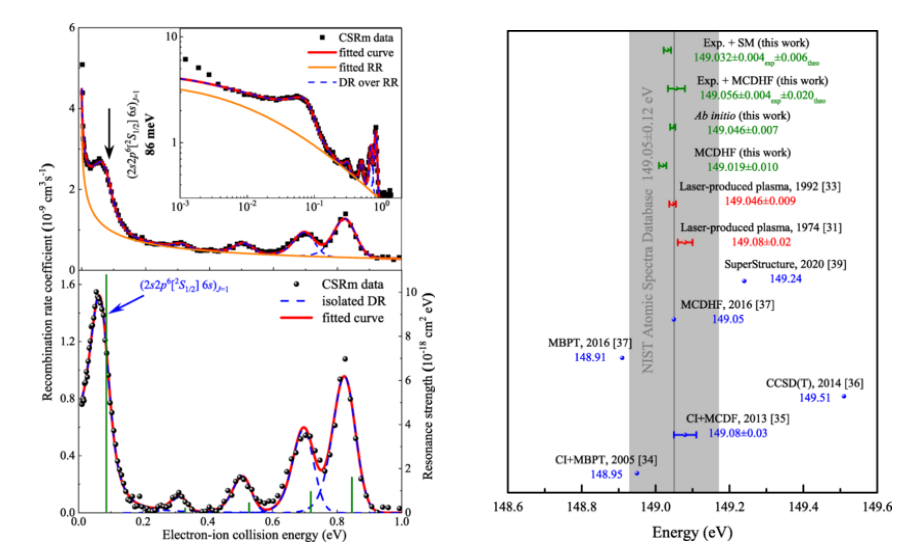Researchers Test High-order QED Effects with Many-electron Highly Charged Ions
The theory of quantum electrodynamics (QED) has achieved great success under weak electromagnetic fields in few-electron quantum systems. QED calculations are sensitive to high-order corrections with the increasing nuclear charge Z, in particular within many-electron systems where electron-electron correlations are complicated.
Atomic energy levels of highly charged ions are ideal systems for testing the QED and relativistic effects. The resonant character of dielectronic recombination (DR) provides an opportunity to precisely determine the transition energies in the ions.
Recently, the researchers from the University of Science and Technology of China, the Institute of Modern Physics of the Chinese Academy of Sciences (CAS) and the University of Giessen have performed the precision DR spectroscopy measurement with fluorine-like nickel ions by employing the merged-beams method. The measurement builds a bridge which enables comparisons between different theories.
Heavy-ion storage rings with an electron cooler are ideal platforms for performing merged-beams electron-ion recombination experiments and obtaining high precision transition energy. The experiment was conducted at the main cooler storage ring of the heavy ion research facility in Lanzhou (HIRFL-CSRm). The measurement covered all the DR resonances for ΔN = 0 within the energy range of 0-160 eV.
The researchers from Fudan University carried out theoretical calculations to identify the measured resonances. The researchers recognized the intermediate state of the first resonance at 86 meV, which enables them to determine the 2s22p5[2P3/2] → 2s2p6[2S1/2] transition energy by calculating the 6s binding energy in cooperation with theoreticians from the Northwest Normal University, Hebei University, St. Petersburg State University and ITMO University.
The yielded transition energies are 149.056(4)exp(20)theo eV and 149.032(4)exp(6)theo eV, respectively. In addition, the researchers evaluated individual contributions from electron-electron correlation, QED corrections and recoil effect using the ab-initio calculations.
At the present level of experimental accuracy, the results are sensitive to third-order correlation and second-order QED effects. The study to test high-order QED effect establishes precision DR spectroscopy with highly charged ions at the CSRm, paving the way for future precision studies at HIRFL-CSR and the upcoming high-intensity heavy-ion accelerator facility (HIAF).
This work was funded by the National Key R&D program of China, the National Natural Science Foundation of China, the Strategic Priority Research Program of CAS, the Natural Science Foundation of Anhui Province and the Youth Innovation Promotion Association of CAS. The paper has been published in the journal Physical Review A.

Figure 1. (Left) Dielectronic recombination spectrum of fluorine-like nickel. The intermediate state of the first resonance at 86 meV was identified to be 2s2p6[2S1/2]6s, which enables a precise determination of the 2s22p5[2P3/2] → 2s2p6[2S1/2] transition energy. (Right) Present experimental and theoretical transition energies as well as previous measured and calculated data. (Image from Physical Review A)
Contact :
LIU Fang
Institute of Modern Physics
Email: fangliu@impcas.ac.cn
Contact Information
Institute of Modern Physics
Email: fangliu@impcas.ac.cn


 甘公网安备 62010202000713号
甘公网安备 62010202000713号


